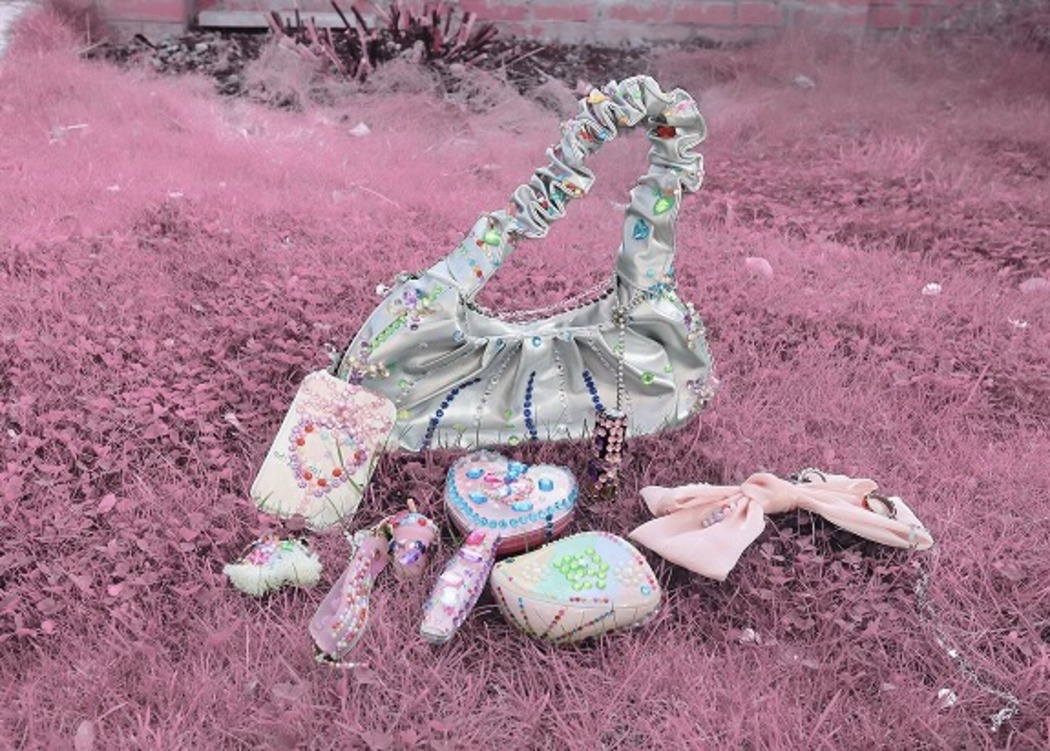Darious Shan
What originally inspired you to create Light Shell: Earth Fantasy Series? Was there a specific idea or moment that triggered this series?
The project began with a hypothetical question: How would people living on Mars in the future interpret the cultural relics of Earth, especially the private everyday objects once worn by women? I am very interested in the concepts of ‘misinterpretation’ and ‘cultural amnesia.’ This concept stems from my concern about radiation, emotional distancing, and the need for gender-specific protective measures. ‘Light Shell’ is the vision of a poetic and protective object that provides both a physical barrier and emotional concealment.
Your work blurs the boundaries between fashion, technology and science fiction. How do you strike a balance between narrative and design when creating these objects?
The core of this project is conceptual design. Fashion and technology are part of its aesthetic and functional language, but the works are ultimately rooted in cultural foresight – imagining future scenarios based on current trends. I draw inspiration from everyday life, for example from ‘What’s in my bag?’ videos on social media, and from elements such as biometric camouflage (e.g. a chameleon’s ability to change colour) and the glowing weapons in magical girl transformation scenes, which symbolise emotional power. These references help me construct visually appealing and narratively rich objects. Design always serves the story.

Each object is rich in symbolism and narrative. Do you see them more as works of art, design prototypes or fictional artefacts?
As conceptual design projects, they exist primarily as fictional artefacts. They are similar to design prototypes, but they do not exist in a current production environment, but rather in an imaginary future. At the same time, they are also works of art – they are meant to provoke thought, not solve problems. They exist at the intersection of fact and fiction, presenting a future that reflects our current fears and hopes.
Application interfaces play an important role in expanding the narrative world. How important are interactivity and digital media for your creative work?
Interactivity is central to concept design because it invites people to enter the world I have constructed and imagine themselves in it.
The goal is not only emotional resonance, but also critical reflection – to make the future seem possible and then question it. Digital media act as a bridge between physical objects and the audience’s imagination. Although I craft physical objects by hand, I use interface design and visual storytelling to deepen immersion in the world and make it seem real.

How do you imagine the audience interacting with your projects? Do you want them to interpret the work from an emotional, critical or playful perspective?
Ideally, all of the above. I want viewers to connect emotionally with the aesthetic elements—the flickering, soft, magical imagery—while critically reflecting on the imaginary misunderstandings and exploring future scenarios through play. By combining object photography, app prototypes and textual descriptions, I invite people to immerse themselves in this alternative timeline and rethink the meaning we attach to personal objects.
This is your final year. How does this project influence your vision for the future as an artist and designer?
This project has deepened my understanding of speculative and emotional design. It has allowed me to integrate different design methods – narrative, UI/UX, physical fabrication – into a coherent narrative system. I have also explored how soft aesthetics and protective themes can be meaningful for marginalised experiences. In the future, I would like to continue creating projects that blur boundaries and spark the imagination – particularly in the areas of critical design, visual storytelling, and future-oriented interface design.

If you could present one of your works in a real museum or exhibition, what story would you want it to tell future visitors?
I hope it would tell a layered story – about how the future misinterprets the past, about emotional survival, and about how we encode meaning into objects. Each object in the Earth Fantasy series is accompanied by a fictional explanation based on how future Martians misinterpret its original purpose. For example, a small hand mirror is presented as an ancient navigation tool that reflects sunlight. I hope that museum visitors will use this object as a starting point to come up with their own fictional stories.


Leave a Reply